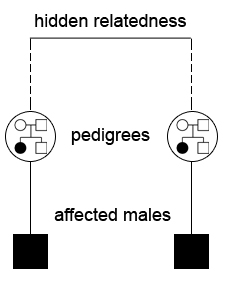Here is a list of old research projects, with lay summaries and links to technical details.
- Scalar-tensor inflation in the Jordan frame (2015–16), supervised by Ray Volkas. To explain why the universe is flat and uniform at large scales, we need a period of rapid cosmic expansion at the beginning of time. Sounds great, but it begs the question: what caused the expansion? One possibility is that spacetime is actually a sort of rubber sheet, bunched in some places and stretched at others. Bunching increases the density of the sheet, while stretching reduces it. The mass distribution obeys gravity in the normal way, but the sheet has its own dynamics, with bunches propagating along the surface, and natural or “unstretched” states. (This setup sounds crazy but arises naturally in string theory.) In my masters project, I considered what sort of rubber sheet dynamics (more formally, scalar-tensor theories of gravity) could create rapid cosmic growth just after the big bang. If you’re looking for something less dense than a thesis, try a completion talk, conference poster or lay summary.

- The Clairaut-Legendre method for slow differential rotation (2014), supervised by Bryn Haskell and Paul Lasky. A star is a big rotating ball of fluid. Gravity squeezes the star and pressure pushes outwards; when the two forces balance, we say that the star is in equilibrium. In simple models, the star is a rigidly rotating sphere. More interesting models split the star into spherical shells rotating around a common axis, but at different speeds. You can go further, splitting the rigid shells into lines of latitude, like a bunch of hula hoops, which rotate around the common axis. I determined equilibrium conditions for the hula hoop star.
- On multiplicative Sidon sets (2013), with David Wood; see this poster for a more accessible summary. Let’s play a game called double-free. From the set of all positive whole numbers, we independently pick an infinite sequence, with the constraint that we are not allowed to pick doubles, e.g. 3 and 6. Since no two numbers in my sequence can have quotient 2, and we call 2 a forbidden quotient for the game. Now, whoever picks the “most” numbers wins. Here, “most” means the largest fraction of the first n whole numbers, as n goes to infinity. Suppose I pick all odd numbers, which is double free and half of all numbers. Can you do better? It turns out you can! In fact, the greedy algorithm, starting with 1 and picking the smallest number which is not a double of something already in the sequence, gives roughly 2/3 of all numbers, and is provably optimal. This strategy for double-free is well understood. We considered two other forbidden quotient games: q-free, where q is a rational number, and {a/b, c/b}-free, where a, b, and c are whole numbers with no common factors. In the latter case, where we have two forbidden quotients, we developed a greedy strategy, along with an algorithm for calculating the optimal fraction of numbers. I was supervised by David Wood as part of the vacation research program in the maths department at the University of Melbourne.

- XIBD: software for inferring pairwise identity by descent on the X chromosome (2012–13), with Lyndal Henden and Melanie Bahlo in the Bahlo lab at the Walter and Eliza Hall institute. Like IKEA furniture, each person carries around their own building instructions; instead of a manual, we have DNA, a string of 3 billion nucleotides. When humans (or other diploid species) mate, the parent strings get randomly interlaced and turned into building instructions for the offspring. We can think about how chunks of genetic code, or substrings, get passed around a family tree by this process, and from looking at shared substrings, make guesses about how people are related. I helped develop a software package to do this, focusing particularly on how to get more mileage from sex-linked chromosomes, which get passed round in different ways between male and female offspring. I conducted this research under the aegis of the Undergraduate Research Opportunities Program. You can read more about my work in this lab presentation from 2012, and play with some of the earlier code I wrote here.

- Teaching and learning (2014–17). I was involved with various teaching
and learning initiatives in the
School of Mathematics and Statistics
at the University of Melbourne. The main themes were active learning and feedback.
- I designed and co-piloted a study using tagging/metadata on assignments to generate automatic feedback. With Deb King and Anthony Morphett.
- I helped Anthony Morphett design and test visualisations of logical syntax.
- Finally, I wrote a couple of Geogebra applets introducing concepts in real analysis (continuity, sequential convergence).